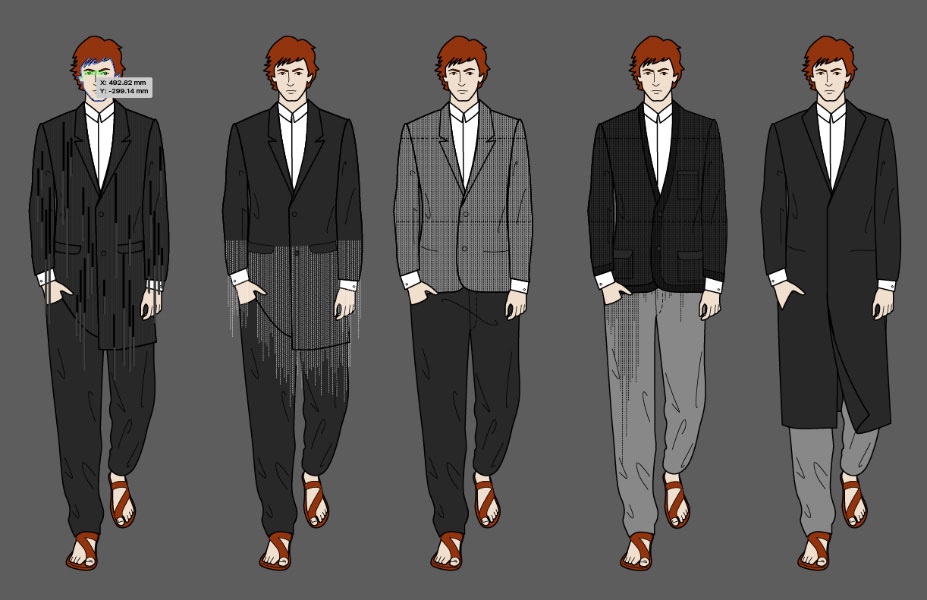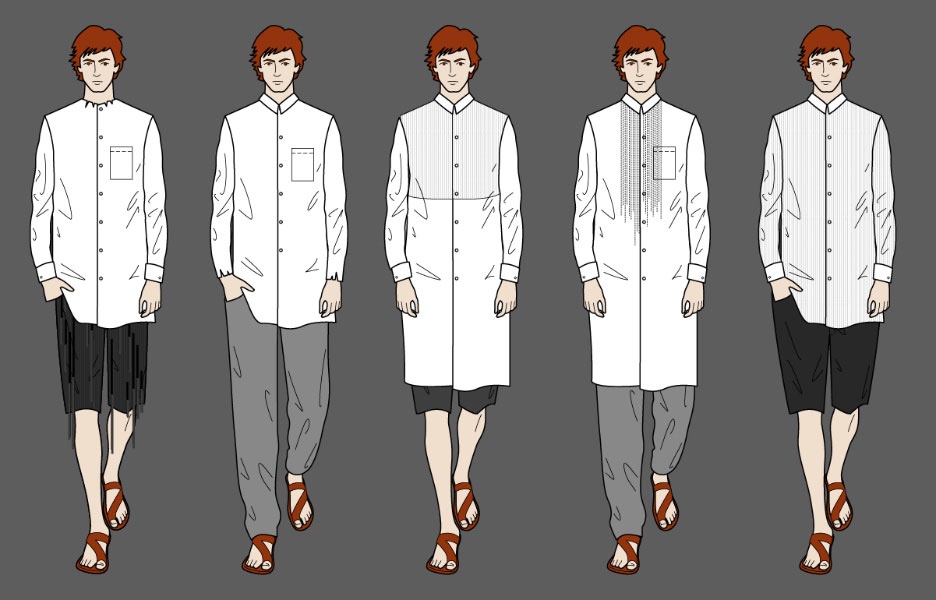With a series of interviews with young designers, who showed at last year’s Fashionclash Festival, we’d like to explore what their dreams, hopes and positioning are. Today with Ester Kubisz.
Ester, how are you today?
Hi, I’m great, thanks.
How does your own description of your designs differ from others’?
My aim is to merge unique styling with a traditional approach to clothes-making focused on tailoring and quality. I deconstruct and recreate the conventional, professional men’s wardrobe, where the main attention is on the suit. Within the deconstruction, I identify things that have caused it become relevant over time. Most important: it’s handcraft and quality. For example, one of our signature trademarks is originally created, detailed textiles such as recreated pinstripe embroidery. The attention to handicraft and traditional tailoring is something we don’t often see among emerging brands nowadays.
What the most important aspect in your design process?
I get my first ideas about next collections while listening to music. The rest of the story behind the collection then follows. It’s like listening to your playlist, think of it as a soundtrack without seeing the movie beforehand. Only after hearing it you get an idea of a story so you go and make it happen. I am listening to music all the time, working with my ears plugged. It helps me to concentrate and takes my mind to the world I am creating with each collection.
What are you most proud of?
Deciding to and taking the step to start my own label. Giving it everything and not losing faith even if things don’t always go easy. They almost never go easy. Ha!
We see a lot of change happening in the fashion industry at the moment – brands are going from a men’s and a women’s to a single collection and with the ‘see now, buy now’ strategy sales and distribution is affected heavily. Where do you see all this going and how do you position your brand within the changing system?
I started as a menswear label but women can easily wear many of our styles too. So, I decided to reposition the brand as unisex. For me it only makes sense to be showing one collection on both men and women. It also saves some costs.
The ‘see now, buy now’ strategy does make sense for larger brands who can afford it. It did scare me a little when I heard of it the first time. But then the brands deciding to go with this strategy are very commercial and sales-driven, they are not exactly my direct competition. It also gives these brands protection from getting copied by high street chains. Fashion has always been a volatile industry. After the breakthrough of social media and its fast adaptation by the fashion industry, later shopping via Instagram and Facebook, I think ‘see now, buy now’ is quite an expectable reaction.
If you could give the younger you advice, what would that be?
Get comfortable with Instagram asap (laughs).
Where do you see your brand in the future?
I am looking to build a self-sustainable unisex fashion label showing two collections per year in January and June. The brand should fill the gap between avant-garde, designers’ fashion and traditional tailoring by combining the two. I’ll concentrate on staying small presenting about 18 outfits per season.
You participated in last year’s Fashionclash Festival. What was this experience like for you and what benefits were you able to derive from it?
Being at Fashionclash was a very pleasant experience. It helped me to present my brand to a wider audience and generated some press coverage. I also got to meet a potential manufacturer who had a presentation at Fashionclash.
What are your life goals, your biggest dreams and high hopes?
To build a healthy firm and write a book.
Thank you for your time.









